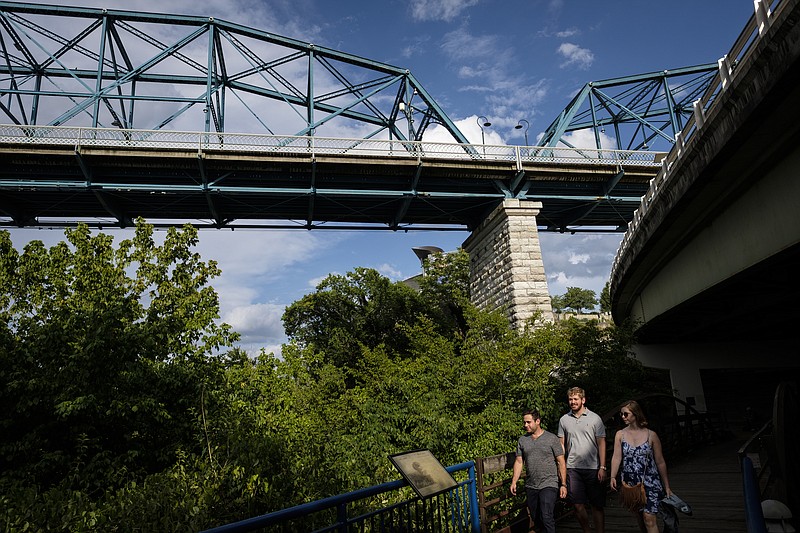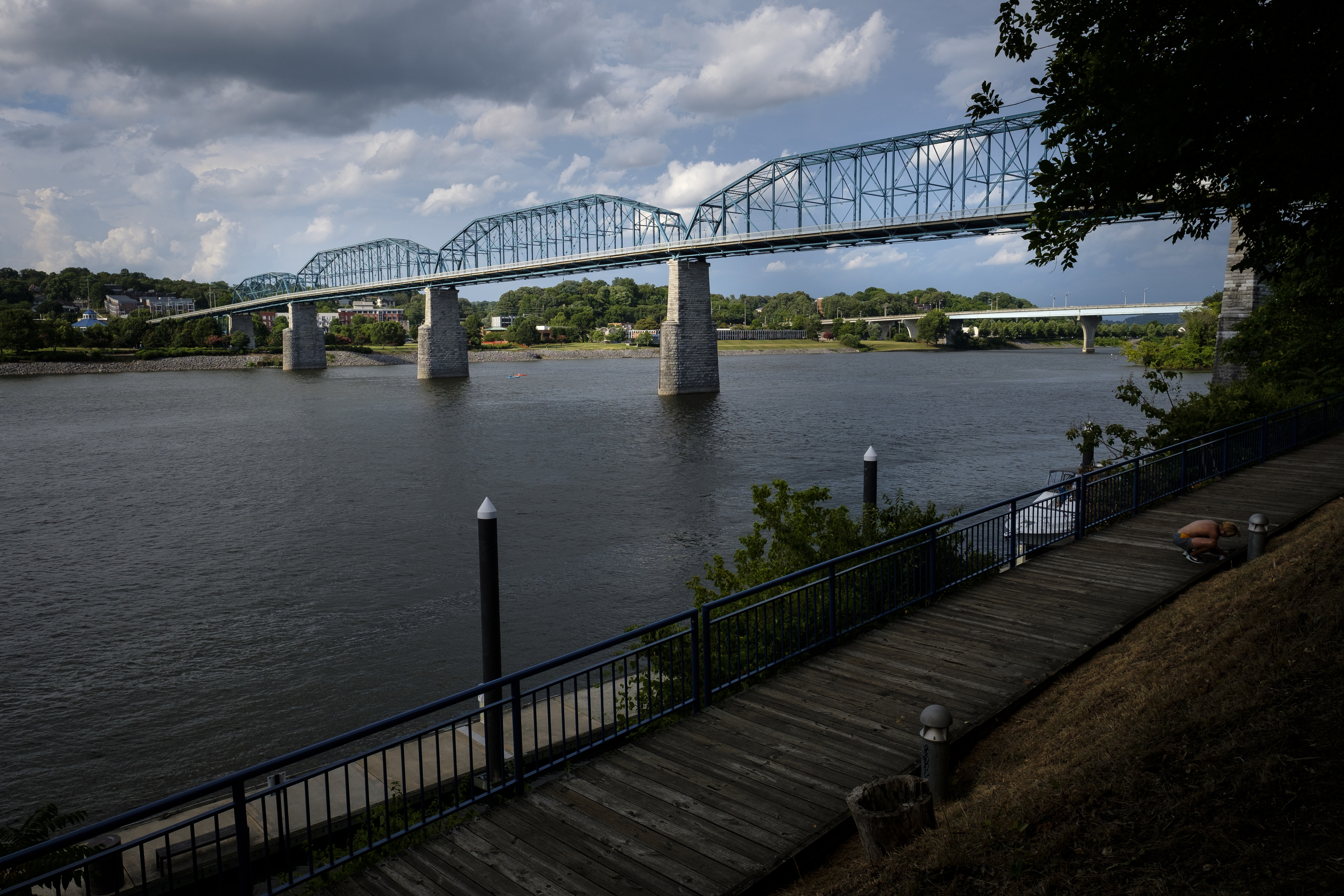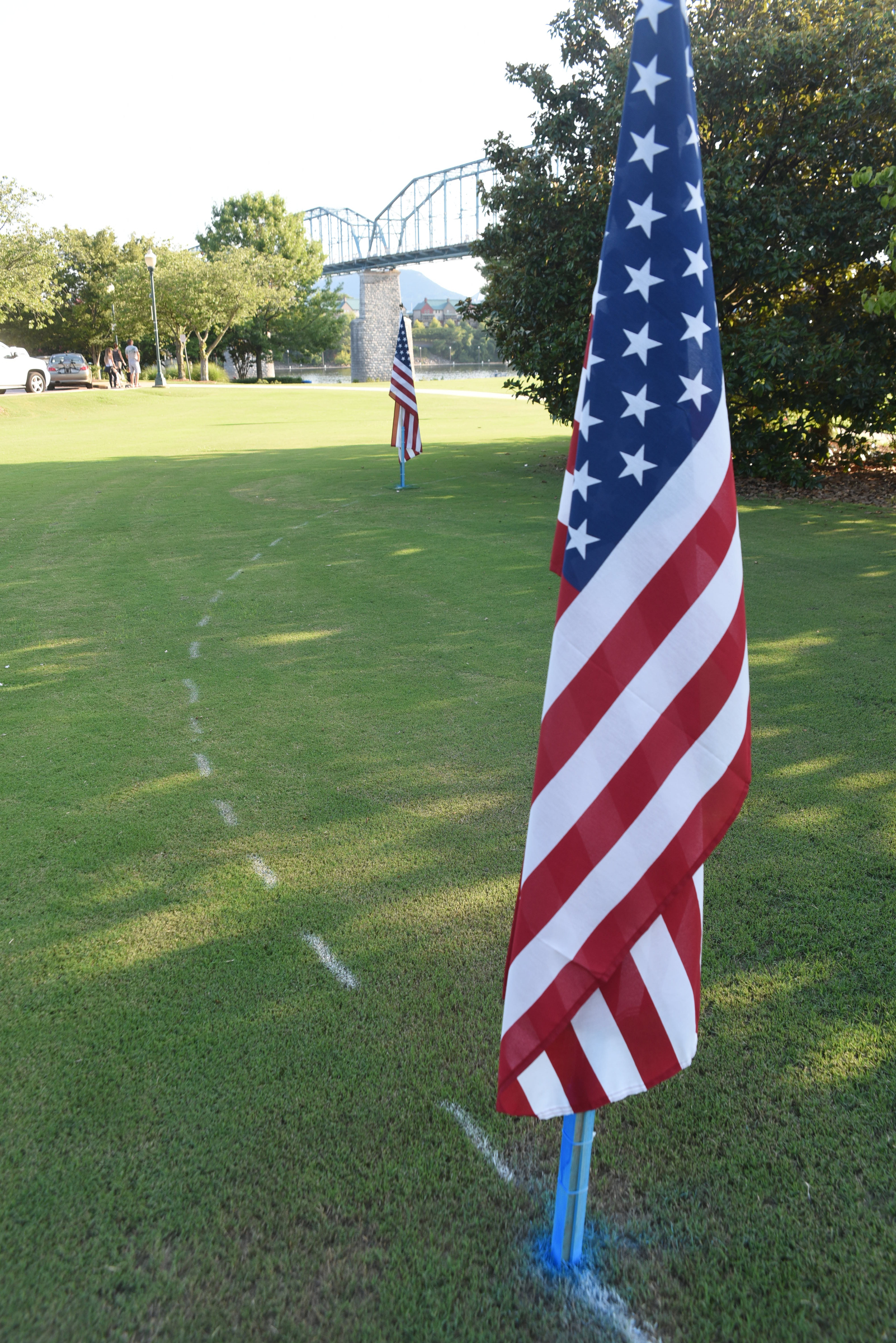View other columns by David Cook
If a new Medal of Honor museum is built, it should be done hesitatingly, mournfully and without celebration.
Especially if the museum is built at Coolidge Park.
No matter how refined or stately the museum - or heritage center, as it's also called - might be, it would remain, at its heart, a museum of warfare. And warmaking and its history should never be something we memorialize lightly and casually, as carousel music plays nearby.
To build such a museum at Coolidge Park seems to drag the scent of warfare into a place that has always represented the opposite. Children at play. Families and fellowship. The open, democratic greenery. The noble circle of trees from our sister nations. The powerful community of arts and theater nearby.
Warfare destroys such things.
Warfare destroys the very thing Coolidge Park represents.
Of course, within war, heroism can and often does exist. Medals of Honor are awarded, and deserved.
Yet soldiering should not be sacrosanct; no matter how heroic soldiers are in individual ways, they remain collectively engaged in the most lamentable of activities. Land is destroyed. Bodies and psyches are destroyed. Families are destroyed. True peace is never won. (Saturday marked the 71st anniversary of the Hiroshima bombing, which opened the door to the nuclear arms threat, whose specter we live under today.)
"You can no more win a war than win an earthquake," Montana congresswoman and pacifist Jeannette Rankin once said.
"One of the big challenges is how to give honor to those who put an end to Hitler, but to do it with tears in our eyes rather than flags in our hands," said one friend, a local preacher.
To build a museum or heritage center in any other way, especially at Coolidge Park, is to continue the soft glorification of war in America. Such words are not meant to offend local soldiers or veterans; quite the opposite. The only way to truly honor soldiers?
Stop celebrating war.
And in God's name, stop sending them to kill and die.
***
If our city's Medal of Honor soldiers are to be memorialized at Coolidge Park, then it is past time our city memorializes the life and death of another hero: Ed Johnson, the black man lynched from the Walnut Street Bridge more than a century ago.
In 1906, he was arrested - the scantest of evidence followed by a kangaroo court trial - for the rape of a white woman in St. Elmo. The events within his story are full of both black heroism and white racial violence, and contain characters that populate our nation's history in mighty ways.
* His attorneys - Noah Parden and Styles Hutchins - who risked their lives, families and careers to become the first black Americans to argue as lead counsel before the U.S. Supreme Court, changing the entire legal system in ways that are still discussed in law classrooms across the country.
* John Marshall Harlan, the Supreme Court justice who decried the Chattanooga lynching.
* President Theodore Roosevelt, who ordered the FBI to investigate the Chattanooga sheriff responsible for aiding the lynch mob.
* W. E. B. DuBois, the moral giant who helped create the NAACP after Johnson's death, and gave advice to his attorneys.
* More than 2,000 Chattanoogans who attended Johnson's funeral, and the many black Chattanoogans who engaged in mass protest by refusing to work on the day after his death.
"Ed Johnson is a hero to be honored," said LaFrederick Thirkill. "There are many acts of heroism within his story."
Thirkill, principal at Orchard Knob Elementary, has kept Johnson's story alive. He's maintained Johnson's forgotten gravesite. Written a play. Created a scholarship in Johnson's name. (To donate, contact the Community Foundation of Greater Chattanooga).
Now he's working with other Chattanoogans - including a helpful City Hall, he said - to create a memorial on the bridge. Not a grotesque re-creation of a lynching, but something powerful, graceful and honest.
Now there is no bridge memorial at all for Johnson, only his name on a tiny footpath plaque.
"Why can't we acknowledge and recognize the injustice?" Thirkill asked. "It is almost like we want to continue to pretend it didn't happen."
Many black Chattanoogans still refuse to walk the bridge because of its violent past. (Alfred Blount was lynched on the bridge 13 years before Johnson). To white Chattanooga, the bridge is a beloved icon - our tourism, our postcards, our Best Town Ever - while to our black neighbors, it is anything but.
"A memorial would heal a lot of wounds for African Americans here," Thirkill said.
We cannot honor our best soldiers while - barely a quarter-mile away, from the park to the bridge - ignoring Johnson and the heroes that surrounded him.
David Cook writes a Sunday column and can be reached at dcook@timesfreepress.com or 423-757-6329. Follow him on Facebook at DavidCookTFP.




